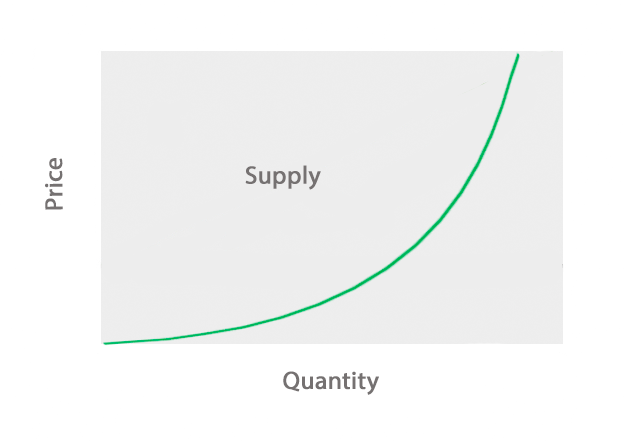Definition: The law of supply is a basic microeconomic concept that states that price and quantity supplied are directly related. Thus, when the price of a product increases, the quantity supplied increases. Equally, when the price of a product decreases, the quantity supplied decreases. This is always true as long as its assume that all factors affecting supply remain equal (ceteris paribus).
What Does Law of Supply Mean?
What is the definition of law of supply? This law makes sense because if companies are seeking to maximize profits, they will be more willing to produce products as the sales price of those products increases. Conversely, if the market is unwilling to pay a high price for a product, companies are less willing to produce these products.
Looking at it another way, if the unit cost decreases, the quantity supplied increases, so that the company increases its profits. If the unit cost increases, the quantity-supplied decreases, so that the company increases its profits. Therefore, the company has to estimate the proper quantity to achieve profit maximization at the point where the marginal cost per unit equals the average cost per unit.
This means that the average cost per unit remains the same and equals the extra cost of producing one more unit of output. So the company increases the quantity-supplied.
Here’s a graphical representation of the law of supply also known as the supply curve.

Let’s look at an example.
Example
Jennifer is a fruit vendor and has a little store at the end of the road. Over the last month, she noticed that the price of strawberries is steadily increasing, having reached $2.89 per pound from $2.64 per pound. This is a 9.5% increase in one month. Additionally, the price of blackberries has risen to $3.25 per pound from $2.90 per pound, which is a 12.1% increase over the last month. What should Jennifer do to maximize profitability?
Jennifer is buying strawberries and blackberries from a certain producer. If the marginal cost per unit equals the average cost per unit, the supplier will provide Jennifer with more strawberries and blackberries, thereby increasing the quantity supplied. Since the price of strawberries and blackberries increases, the quantity supplied to consumers should increase too. The more strawberries and blackberries Jennifer sells, the more profit she will make until the equilibrium price is reached.


